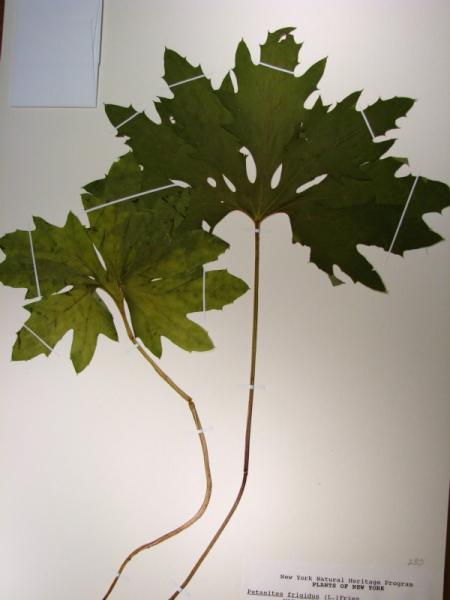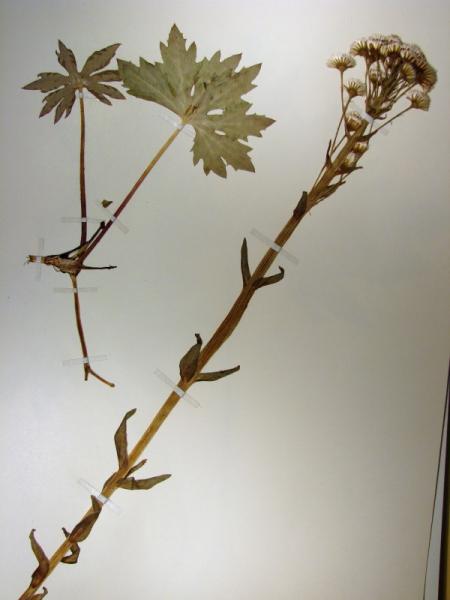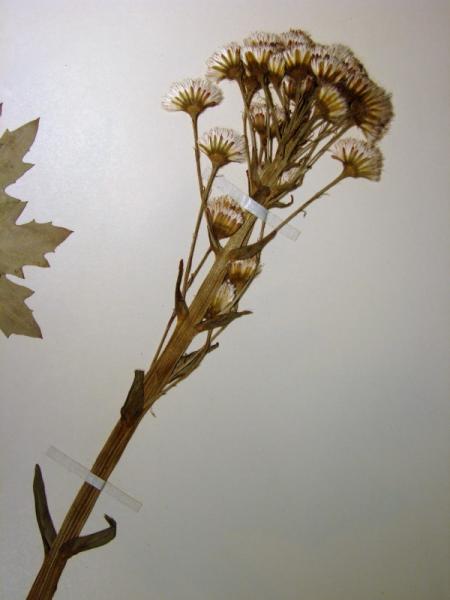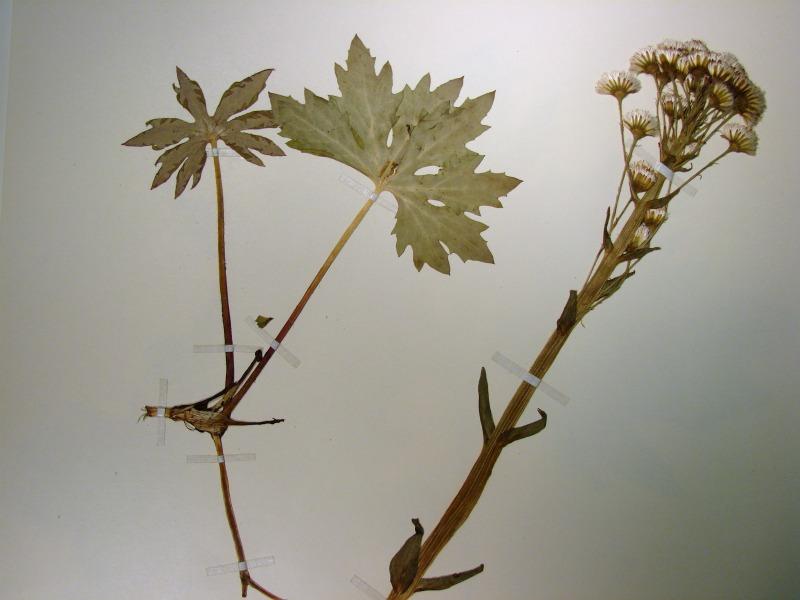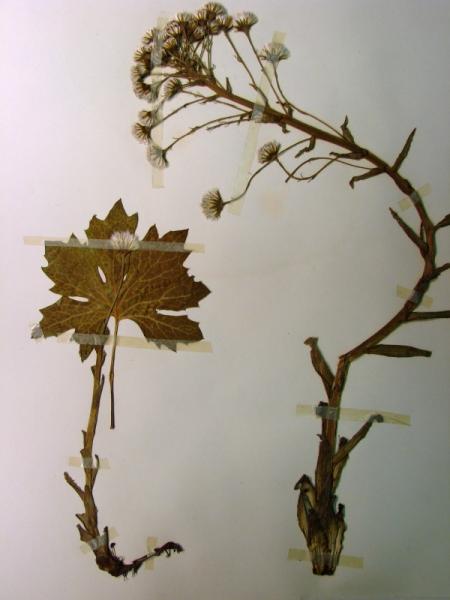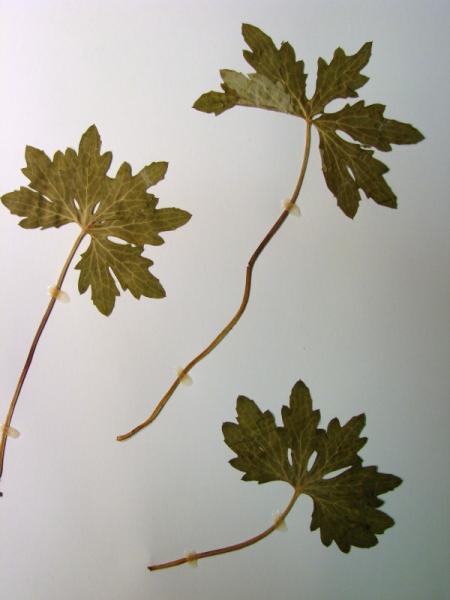Sweet Coltsfoot
Petasites frigidus var. palmatus (Ait.) Cronq.
- Class
- Dicotyledoneae (Dicots)
- Family
- Asteraceae (Aster Family)
- State Protection
- Endangered
Listed as Endangered by New York State: in imminent danger of extirpation in New York. For animals, taking, importation, transportation, or possession is prohibited, except under license or permit. For plants, removal or damage without the consent of the landowner is prohibited.
- Federal Protection
- Not Listed
- State Conservation Status Rank
- S1
Critically Imperiled in New York - Especially vulnerable to disappearing from New York due to extreme rarity or other factors; typically 5 or fewer populations or locations in New York, very few individuals, very restricted range, very few remaining acres (or miles of stream), and/or very steep declines.
- Global Conservation Status Rank
- G5T5
Secure globally - Both the species as a whole and the subspecies/variety are common in the world; widespread and abundant (but may be rare in some parts of its range).
Summary
Did you know?
In New York the flowers have never been photographed in the wild.
State Ranking Justification
There are only three existing populations in the state. There are 20 historical occurrences,` and many of these have not been searched in detail, so it is expected that a few more populations could be found. Some historical records are probably extirpated by changes in hydrology or development of wetlands.
Short-term Trends
Populations seem stable as they occur in protected areas, even though their numbers are low.
Long-term Trends
This species was never common in the state but only three populations are known from the 20 historical records from the late 1800s and 1900s. Some of these may be rediscovered but changes in hydrology and development patterns have probably reduced overall numbers.
Conservation and Management
Threats
Potential threats could be any changes in hydrology that flood or permanently dry up the wetland habitat.
Conservation Strategies and Management Practices
Establish sufficient buffers around populations to preserve the undisturbed aspect and hydrology of their habitat.
Research Needs
It is not known whether this plant has recently been seen in flower in New York and if not, why not. Research could be done to determine if it is possible to expand existing populations.
Habitat
Habitat
In New York this species has been found growing at the edges of forested, calcareous, northern swamps, or in wetter, open sites within upland forests. More information on the habitat preferences of this species in New York is needed (New York Natural Heritage Program 2007). Low moist woods, coniferous and mixed, including cedar and tamarack swamps and some rocky sites; seems to bloom best along trails and after clearing (Voss 1996). Meadows, swampy places and moist woods (Gleason and Cronquist 1991). Low woods, glades and damp clearings (Fernald 1970).
Associated Ecological Communities
- Hemlock-hardwood swamp
(guide)
A swamp that occurs on mineral soils and deep muck in depressions which receive groundwater discharge. These swamps usually have a fairly closed canopy (70 to 90% cover), sparse shrub layer, and low species diversity. The tree canopy is typically dominated by eastern hemlock and co-dominated by yellow birch and red maple.
- Hemlock-northern hardwood forest
(guide)
A mixed forest that typically occurs on middle to lower slopes of ravines, on cool, mid-elevation slopes, and on moist, well-drained sites at the margins of swamps. Eastern hemlock is present and is often the most abundant tree in the forest.
- Red maple-tamarack peat swamp
(guide)
A swamp that occurs on organic soils (peat or muck) in poorly drained depressions. These swamps are often spring fed or enriched by seepage of mineral-rich groundwater resulting in a stable water table and continually saturated soil. The dominant trees are red maple and tamarack. These species usually form an open canopy (50 to 70% cover) with numerous small openings dominated by shrubs or sedges.
Associated Species
- Acer rubrum
- Acer saccharum (sugar maple)
- Betula papyrifera (paper birch)
- Carex hystericina (porcupine sedge)
- Carex stricta (tussock sedge)
- Equisetum arvense (field horsetail, common horsetail)
- Eupatorium perfoliatum (boneset)
- Eutrochium maculatum
- Fragaria virginiana
- Fraxinus americana (white ash)
- Fraxinus nigra (black ash)
- Galium aparine (cleavers)
- Hamamelis virginiana (witch-hazel)
- Larix laricina (tamarack)
- Linnaea borealis
- Onoclea sensibilis (sensitive fern)
- Osmunda cinnamomea
- Parthenocissus quinquefolia (Virginia-creeper)
- Pteridium aquilinum
- Solidago flexicaulis (zig-zag goldenrod)
- Solidago juncea (early goldenrod)
- Symplocarpus foetidus (skunk-cabbage)
- Thelypteris palustris
- Tiarella cordifolia (foamflower)
- Toxicodendron vernix (poison-sumac)
- Tsuga canadensis (eastern hemlock)
- Viburnum acerifolium (maple-leaved viburnum)
Range
New York State Distribution
Sweet Coltsfoot is found at scattered locations from Albany to the northern and western parts of the state.
Global Distribution
Sweet Coltsfoot is found in all the Canadian Provinces, all the New England states, and west across the northernmost tier of the U.S., excepting Montana, and from Washington State south into California.
Identification Comments
General Description
Sweet Coltsfoot is a perennial herb of the aster family. It grows up to 50 cm high. The basal leaves are round to heart or kidney-shaped overall, green and glabrous above, and covered with white hairs underneath. They are palmately lobed, the sinuses (gaps) between the (5 to 11) lobes extending more than halfway to the base of the leaf. These lobes in turn may be toothed, or cleft into lobes. The flowers appear from basal stems in early spring, before the leaves, in roughly ball-shaped infloresences (corymb, or raceme). They are borne on pedicels 3-10 cm long, and are creamy white, the ray (petal-like) flowers only 2-7 mm long. However, in New York State this species apparently does not usually flower.
Best Life Stage for Proper Identification
Although having both flowers or fruit and leaves is ideal for identification, this species rarely flowers in New York, and populations have been identified based on the leaves only.
Similar Species
Petasites frigidus var. palmatus is the only variety of Petasites frigidus in New York. (Petasites frigidus is now considered to be the only species in North America). The flowers may be confused with two non-native, weedy species: Petasites hybridus, and Tussilago farfara. Petasites hybridus has purple, rayless flowers with short pedicels, and simple leaves, and the petioles have dilated sheathing bases. It also tends to grow in more disturbed and waste places. Tussilago farfara (confusingly, also commonly called "coltsfoot") has entirely yellow flowers and simple leaves.
Vegetative Sweet Coltsfoot plants could be confused with Goldenseal or May-Apple, but these species have leaves which are borne on branching stems, rather than basal. The leaves may also be confused with Canada waterleaf, Hydrophyllum canadense but on the underside, the secondary veins are slightly pinnate from the primary veins and green on the undersides while sweet coltsfoot has the primary and secondary veins arising from the same point at the base. Sweet coltsfoot leaves are also whitish on the undersides.
Best Time to See
This species flowers in April or May, before the emergence of the leaves. The leaves may persist until July.
- Flowering
- Fruiting
The time of year you would expect to find Sweet Coltsfoot flowering and fruiting in New York.
Sweet Coltsfoot Images
Taxonomy
Sweet Coltsfoot
Petasites frigidus var. palmatus (Ait.) Cronq.
- Kingdom Plantae
- Phylum Anthophyta
- Class Dicotyledoneae
(Dicots)
- Order Asterales
- Family Asteraceae (Aster Family)
- Order Asterales
- Class Dicotyledoneae
(Dicots)
- Phylum Anthophyta
Synonyms
- Petasites palmatus (Ait.) Gray
Additional Resources
Best Identification Reference
Flora of North America Editorial Committee. 2006. Flora of North America North of Mexico. Vol. 20. Magnoliophyta: Asteridae, Part 7: Asteraceae, part 2. Oxford Univ. Press, New York. xxii + 666 pp.
Other References
Fernald, M.L. 1950. Gray's manual of botany. 8th edition. D. Van Nostrand, New York. 1632 pp.
Gleason, Henry A. and A. Cronquist. 1991. Manual of Vascular Plants of Northeastern United States and Adjacent Canada. The New York Botanical Garden, Bronx, New York. 910 pp.
Holmgren, Noel. 1998. The Illustrated Companion to Gleason and Cronquist's Manual. Illustrations of the Vascular Plants of Northeastern United States and Adjacent Canada. The New York Botanical Garden, Bronx, New York.
New York Natural Heritage Program. 2010. Biotics database. New York Natural Heritage Program. New York State Department of Environmental Conservation. Albany, NY.
New York Natural Heritage Program. 2024. New York Natural Heritage Program Databases. Albany, NY.
Newcomb, Lawrence. 1977. Newcomb's Wildflower Guide: An Ingenious New Key System for Quick, Positive Field Identification of the Wildflowers, Flowering Shrubs, and Vines of Northeastern and North-Central North America. Little, Brown and Company. Boston.
Voss, Edward G. 1996. Michigan Flora Part III. Dicots Concluded (Pyrolaceae - Compositae). Cranbrook Institute of Science Bulletin 61 and University of Michigan Herbarium. 622 pp.
Weldy, T. and D. Werier. 2010. New York flora atlas. [S.M. Landry, K.N. Campbell, and L.D. Mabe (original application development), Florida Center for Community Design and Research http://www.fccdr.usf.edu/. University of South Florida http://www.usf.edu/]. New York Flora Association http://newyork.plantatlas.usf.edu/, Albany, New York
Weldy, Troy W. and David Werier. 2005. New York Flora Atlas. [S.M. Landry, K.N. Campbell, and L.D. Mabe (original application development), Florida Center for Community Design and Research. University of South Florida]. New York Flora Association, Albany, NY. Available on the web at (http://newyork.plantatlas.usf.edu/).
Links
About This Guide
Information for this guide was last updated on: May 12, 2019
Please cite this page as:
New York Natural Heritage Program. 2024.
Online Conservation Guide for
Petasites frigidus var. palmatus.
Available from: https://guides.nynhp.org/sweet-coltsfoot/.
Accessed July 26, 2024.
